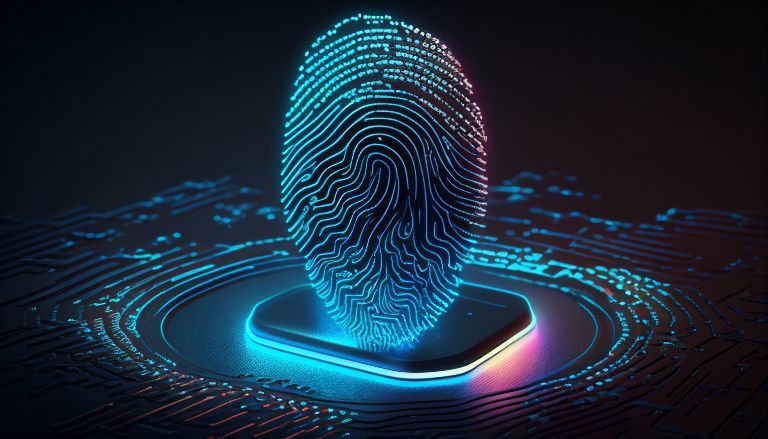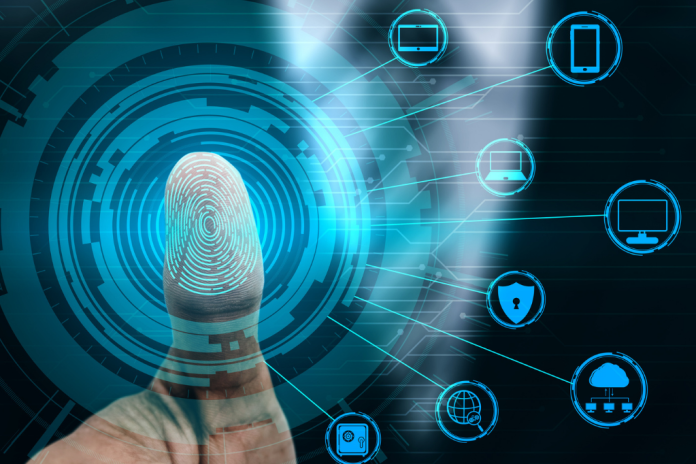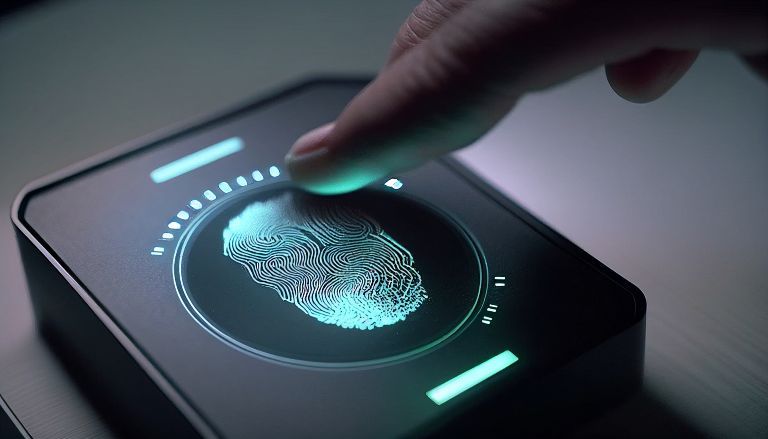
In today’s rapidly evolving digital landscape, the financial services sector stands at the forefront of technological innovation and cyber threats. As transactions increasingly migrate online, safeguarding sensitive financial data has become paramount. Traditional security measures, such as passwords and PINs, are proving inadequate against sophisticated cyber-attacks and identity theft.
Enter biometric authentication—a cutting-edge solution offering enhanced security by leveraging unique physiological and behavioral characteristics.
This article delves into how biometric authentication is revolutionizing security in financial services, its impact on the fintech industry, the creation of new fintech jobs, and future prospects.
Table of Contents
Understanding Biometric Authentication
Biometric authentication refers to the verification of an individual’s identity based on unique biological traits. Unlike traditional methods that rely on something you know (passwords) or something you have (tokens), biometrics is about something you are. The most common types of biometric modalities include:
- Fingerprint Recognition: Every human has a unique set of fingerprints, which makes it a unique identifier.
- Facial Recognition: Analyzes facial features and structures.
- Iris and Retina Scanning: Examines the unique patterns in the colored ring around the pupil or the blood vessels at the back of the eye.
- Voice Recognition: Identifies vocal characteristics and speech patterns.
- Behavioral Biometrics: Assesses patterns in user behavior, such as typing rhythm, navigation habits, or even gait.
Rising Cybersecurity Threats
Financial institutions are prime targets for cybercriminals due to the valuable data and assets they hold. According to cybersecurity reports, there has been a significant increase in phishing attacks, malware, and sophisticated hacking attempts targeting banks and financial platforms.
Limitations of Traditional Authentication
- Passwords and PINs: Susceptible to being stolen, guessed, or hacked. Users often recycle passwords across platforms, exacerbating the risk.
- Security Tokens and Cards: Can be lost, stolen, or duplicated.
- Knowledge-Based Authentication: Relies on personal information that can often be found or inferred from social media and public records.
These methods, while once adequate, no longer provide the robust security necessary to protect against modern threats.
Impact on the Fintech Industry
Driving Innovation and Growth
The adoption of biometric authentication is significantly impacting the fintech industry by driving innovation and creating new opportunities. Fintech companies are at the forefront of integrating biometrics into their services, enhancing security measures, and improving user experience. This shift is not only attracting more customers but also fostering trust in digital financial services.
Creation of Fintech Jobs
The implementation of biometric technologies is leading to the creation of specialized fintech jobs. There’s a growing demand for professionals skilled in biometric systems, cybersecurity, and data analytics within the fintech sector. Roles such as biometric software developers, cybersecurity analysts, and data privacy officers are becoming increasingly vital.
Enhancing Regulatory Compliance
Fintech companies are leveraging biometrics to meet stringent regulatory requirements related to security and customer authentication. This adherence to compliance is essential for building credibility and avoiding legal pitfalls, further influencing the landscape of fintech jobs as compliance specialists and legal advisors become more sought after.
Competitive Advantage
By integrating biometric authentication, fintech firms gain a competitive edge over traditional financial institutions that are slower to adopt new technologies. This advantage translates into market growth and the expansion of fintech jobs, as companies scale their operations to meet increasing demand.
Case Studies in Fintech
- Revolut: Revolut uses facial recognition and fingerprint authentication to secure user accounts, enhancing trust and attracting more users.
- N26: N26 employs biometric login features, contributing to its rapid growth and the subsequent increase in fintech jobs within the company.
- Robinhood: Robinhood integrates fingerprint and facial recognition to safeguard user investments, positioning itself as a secure alternative in the fintech market.
How Biometric Authentication Enhances Security
Uniqueness and Difficulty to Replicate
Every individual has inherently unique biometric traits. This makes it extremely difficult to replicate or forge. For example, the probability of two people having the same fingerprint is basically zero.
Multi-Factor Authentication (MFA)
Biometrics can be integrated into MFA systems, combining something the user knows (password), something they have (mobile device), and something they are (biometric trait) for layered security.
Real-Time Fraud Detection
Behavioral biometrics can monitor real-time user interactions to detect anomalies that may indicate fraudulent activities, such as changes in typing speed or navigation patterns.
Examples in Financial Services
- Mobile Banking Apps: Many banks now allow login and transaction authorization using fingerprint or facial recognition on smartphones.
- ATM Access: Some ATMs use palm vein or iris scanning instead of cards and PINs.
- Voice Biometrics: Call centers use voice recognition to authenticate customers over the phone.
Implementation Challenges and Considerations
Privacy Concerns
Storing biometric data raises significant privacy issues. Unauthorized access to this data can have severe consequences since biometric traits cannot be changed like passwords.
Data Security
Biometric data must be securely stored and transmitted, often requiring advanced encryption methods. The risk of data breaches necessitates stringent security protocols.
False Positives and Negatives
No biometric system is infallible. Factors like poor lighting, injuries, or aging can affect recognition accuracy, leading to authentication failures or security lapses.
Regulatory Compliance
Financial institutions must navigate a complex web of regulations governing biometric data use, such as the General Data Protection Regulation (GDPR) in the EU and the California Consumer Privacy Act (CCPA) in the U.S.
Cost and Infrastructure
Implementing biometric systems can be costly, requiring investment in hardware, software, and employee training.
Influence on the Fintech Jobs Market
Demand for Specialized Skills
The rise of biometric authentication is reshaping the fintech jobs market. There’s an increasing demand for professionals with expertise in biometric technology, cybersecurity, and data protection. Companies are seeking talent that can develop, implement, and manage advanced security systems.
Interdisciplinary Opportunities
Biometrics in fintech is creating interdisciplinary fintech jobs that combine knowledge of finance, technology, and security. Positions like biometric compliance officers and user experience designers specializing in biometric interfaces are emerging.
Global Collaboration
As fintech companies expand globally, there’s a need for fintech jobs that involve coordinating biometric security measures across different countries and regulatory environments. This expansion requires professionals adept at navigating international laws and cultural differences in biometric acceptance.
Educational Initiatives
The growing importance of biometrics is influencing educational institutions to offer specialized courses and certifications. This trend is preparing a new generation of professionals for fintech jobs centered around biometric technologies.
Future Outlook
Advancements in Biometric Technology
Emerging technologies like vein pattern recognition and DNA-based authentication are on the horizon, promising even higher security levels.
Integration with Artificial Intelligence
AI can enhance biometric systems by improving accuracy and enabling adaptive learning to recognize legitimate users even as their biometric traits change over time.
Blockchain for Secure Data Storage
Blockchain technology offers decentralized and tamper-proof methods for storing biometric data, potentially addressing privacy and security concerns.
Expansion of Fintech Jobs
The continuous evolution of biometric authentication is expected to further expand the fintech jobs market. Opportunities in research and development, system integration, and compliance are likely to grow, attracting talent worldwide.
Conclusion
Biometric authentication represents a significant advancement in securing financial services against ever-increasing cyber threats. By leveraging unique physiological and behavioral traits, financial institutions can provide robust security while enhancing user convenience. The impact on the fintech industry is profound, driving innovation, creating new fintech jobs, and reshaping the market landscape.
However, the implementation of biometric systems must be approached with careful consideration of privacy, data security, and regulatory compliance. As technology advances and becomes more integrated with AI and blockchain, biometrics is poised to become an indispensable component of financial security strategies.
Financial institutions and fintech companies that embrace biometric authentication will not only protect themselves and their customers from fraud but also position themselves as innovators in a competitive market. The balance between security and user experience is delicate, but biometrics offers a promising path forward in achieving both. The growth in fintech jobs related to biometrics underscores the importance of this technology and its role in shaping the future of financial services.















Recent Comments